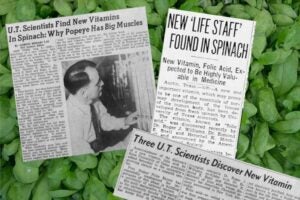AUSTIN, Texas — A University of Texas at Austin chemical engineer has developed a new plastic packaging process that will allow small electronic parts, including microchips, to be coated in protective plastic at a much faster rate and less expensively than ever before — which should mean cheaper and more reliable electronic products for the consumer.
JemPac International Corp. has obtained exclusive rights to the new technology through the efforts of UT Austin’s Office of Technology Licensing, and plans to penetrate a worldwide market that spends billions of dollars per year for plastic packaging of electronics. The agreement means significant royalty income for the University.
Using a new inexpensive chemical material called JemStone, inventor Dr. Joel Barlow and JemPac have created a process allowing for high-speed encapsulation (protective coating) of microelectronics using substantially lower pressure and lower temperatures than in current conventional molding methods. The process called FlowMolding can reduce costs, improve packaging yields and extend the operating life of commercial electronics, according to Barlow and representatives from JemPac.
Typically people who develop molding machines, create these machines to use existing chemicals. People who invent chemicals do so for conventional existing machines. We have changed both the chemistry and the machine,” Barlow said.
“Radios, phones and cars using lower tech computer chips could be impacted the most,” said Barlow. “Currently, the packaging in these is more expensive than the chip themselves. Since our materials are cheaper and our machine increases production dramatically, you can see that costs could fall substantially.”
Besides being as much as 30 times faster and four times less expensive than normal molding processes, FlowMolding can be used to encapsulate electronics that have never been molded before due to their inability to stand up to the necessary heat and pressure. FlowMolding is done at very low heat and with low pressure, and therefore opens up whole new markets for JemPac.
“By the year 2000, the integrated circuits industry alone will spend $20 billion in plastic packaging of parts. Add to that the ability to penetrate a heretofore untapped microelectronics encapsulation market, and the opportunity becomes huge,” said JemPac’s CEO Steve Kelley. “Basically, we are going to make a better plastic material and the system to deliver it.”
Kelley was a technical fellow at Motorola before working at MCC on high-tech commercial development. He also was the founder and original CEO of NetSolve, another venture backed start-up company. JemPac has secured significant venture capital from KLM Capital Management (Santa Clara, Calif., and Hong Kong) and Current Ventures, a new Austin-based fund, and will be an Austin start-up company based on this UT-invented technology, Kelley added. He estimates a potential $1 billion per year FlowMolding equipment market by early next decade.
The collaboration between JemPac and UT Austin will establish a new, semiconductor-related industry in Austin and, when fully operational, will produce substantial royalty income to the University based on equipment and product sales, said Renee Harvey Mallett, assistant director of the Office of Technology Licensing.
Barlow, who holds the Cullen Trust Professorship in chemical engineering, has been at UT Austin for more than 23 years, and has achieved world-class recognition for his work in fundamental thermodynamics research concerning polymer blends. He will be a key technical adviser to JemPac, which he formed in 1995 to market his new invention.
Originally the state of Texas Advanced Technology Program provided money to do the research to develop the chemistry. “It couldn’t have been done otherwise,” Barlow said. Later industry conducted quality control testing of chips encapsulated by Barlow and his students.
Sixteen scientific publications detail the chemistry of the new plastic, including several in the American Chemical Society’s Industrial and Engineering Chemistry. “We are not attempting to patent the chemistry. We are patenting the machinery for delivering the chemicals,” Barlow said.



